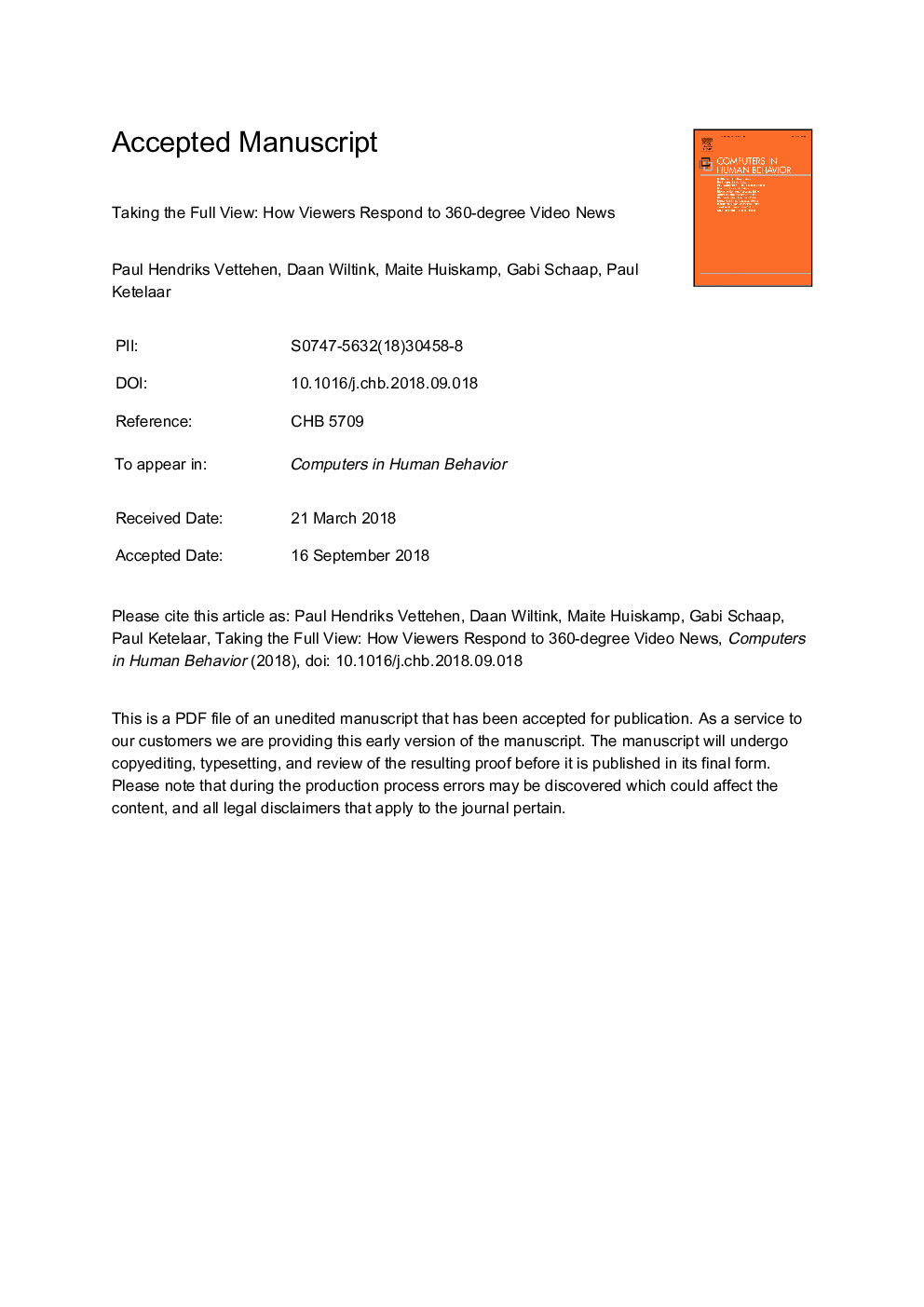| Article ID | Journal | Published Year | Pages | File Type |
|---|---|---|---|---|
| 10225642 | Computers in Human Behavior | 2019 | 39 Pages |
Abstract
Immersive storytelling technologies in journalism are thought to have the power to boost viewer responses to news in ways heretofore undreamed of. However, research is scarce. This study is the first to investigate what 360-degree camera video as a means for conveying news stories might add to traditional 2D video. A one-factorial between subjects experiment (N = 83) was conducted to investigate the effect of 360-degree news on presence, enjoyment, credibility, recognition, and understanding. The experimental group watched a news video in 360-degree format, whereas the control group viewed the same video in 2D. Results show that 360-degree video is evaluated higher in terms of presence, enjoyment, and credibility, while there are no negative effects of 360- degree video on recognition and understanding. The effects on enjoyment and credibility are mediated by presence. Although 360-degree journalism research is still in its infancy, the current study indicates that this form of news reporting has the potential to involve audiences as never before.
Related Topics
Physical Sciences and Engineering
Computer Science
Computer Science Applications
Authors
Paul Hendriks Vettehen, Daan Wiltink, Maite Huiskamp, Gabi Schaap, Paul Ketelaar,
